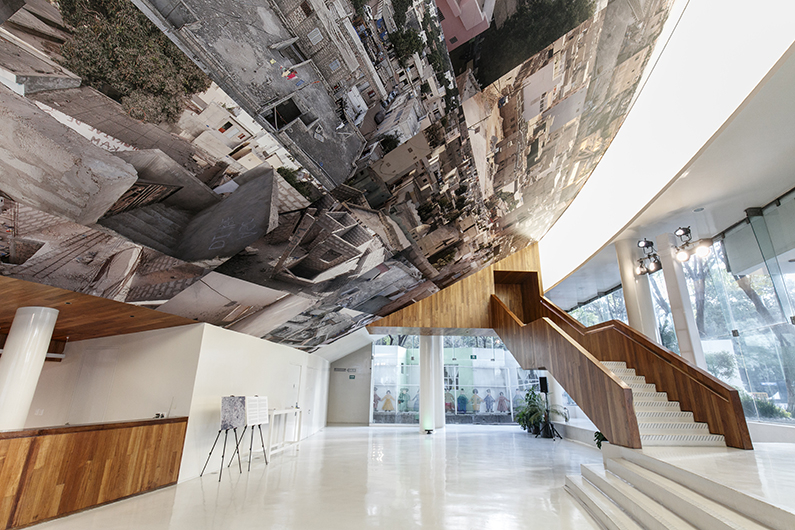Ouakam fractals
- 2015-2017
- Mexico / Biennale de Dakar / MAXXI Rome
- installation
A wall photography showing a particular point of view of the village of Ouakam in Senegal. Ouakam is a small village of Lébous situated in the neighborhood of Dakar.
The Lébous are fishermen and most are practitioners of a traditional animist religion that associates objects belonging to public space (vegetable or inanimate) with a transcendental life. Trees, pieces of walls, and a dump are entities inhabited by spirits who have a strong relationship with communitarian life and individual behaviors or choices. Lébous are the keepers of a series of daily life practices that bring solutions to problems in accordance with communitarian models of decision-making. Specific public spaces of the old village – a labyrinth of sandy paths and fields – are the theater of these collective debates and mediations. After decades of marginal existence in the context of Dakar’s urban system, the construction of the Monument de la Renaissance africaine on top of one of the two sacred mountains of the area forced the neighborhood to a carry out a new, deep economic, urban, and social transformation. The populist monument, designed by the former President of the Republic Abdoulaye Wade and constructed by North Korean craftspeople, brought national and international tourism to the area, led to the construction of a highway from the city center, and in fact contributed to the urban expansion of Ouakam, which is now entirely surrounded by new buildings and construction sites.
Sammy Baloji focuses his research on the skin and the inner structure of Ouakam, mapping streets and buildings, and conceiving an installation of images which immerse the spectator in a lively blue and sandy monochrome experience of the district. This project focuses on post-colonial identities, borders and African urbanization.
